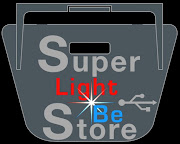from KHouse
Ecclesiastes 1:9 reminds us “Whatever has happened, will happen again; whatever has been done, will be done again. There is nothing new on earth” (ISV).
Most people would agree that we live in an age of technological innovation. However, some recent archeological discoveries may prove that some of this new technology may have been discovered centuries or even millennia before, only to be lost, until now.
Take for example a 1,600 year old cup discovered in the 18th century. The Lycurgus Cup named after the king depicted on the glass from the sixth book of Homer’s Iliad has fascinated scientists for decades. The unique properties from the glass allow the cup to change its color. In direct light the glass of the cup resembles jade, but when the light shines through the glass the cup turns to a translucent ruby color. This unusual optical effect is called dichroic.
The cup resides at the British Museum. They acquired it in 1958 from Lord Rothschild, who had it in the family for almost a century. Various studies were done on the cup since 1950, but a recent study has uncovered a technology that was thought to be a 20th century discovery.
After decades of study, scientists discovered tiny particles of silver and gold infused in the glass. Each gold and silver particle measured 50 nanometers in diameter. Scientists concluded in a 2007 research paper that even with modern power tools, this cup would take years to complete. Other cups similar to the Lycurgus Cup have been discovered by archeologists proving that Roman glass workers in 400 A.D. were the pioneers in nanotechnology.
The term nanotechnology describes building machines at a molecular level. K. Eric Drexler, an American engineer and a graduate from M.I.T, popularized the term, calling it molecular nanotechnology in the 1970s. The word nanotechnology is sometimes referred to as general technology because it can impact almost every industry.
The U.S. National Science Foundation describes nanotechnology like this:
“Imagine a medical device that travels through the human body to seek out and destroy small clusters of cancerous cells before they can spread. Or a box no larger than a sugar cube that contains the entire contents of the Library of Congress. Or materials much lighter than steel that possess ten times as much strength.”
The word “nano” comes from a Greek word that means “dwarf”. A nanometer is one billionth of a meter. In physical terms a nanometer is the breadth of three to four atoms placed side by side. The human hair is 50,000 nanometers in diameter.
Most experts have defined the parameters of nanotechnology that deal with anything measuring between 1 and 100 nanometers (nm). Anything above 100 nm is considered microscale and anything below 1 nm is considered the atomic scale.
Building nanomachines from the ground up starts with microscopic molecules called assemblers. It would require trillions of assemblers working simultaneously together to build one nanoscopic machine. The assemblers would also replicate themselves, building second and third generations of assemblers. Once enough assemblers have been replicated, they can begin to produce objects. The assemblers and replicators working together could eventually construct products that would replace human labor. This would decrease the cost of manufacturing consumer goods and make these goods plentiful, cheaper, and stronger. Famine would eventually be eradicated by food-fabricated machines to feed the hungry. Nano-surgery may be the next impact to the medical industry. Patients drink a fluid containing nanorobots programmed to attack and reconstruct the molecular structure of a cancer cell or virus. Nanorobots can also perform internal surgery without leaving external scars. The cosmetic surgery industry will take advantage of the technology to change a patient’s facial features, or eye color using nano-surgery robots. Nanorobots could replace dangerous jobs such as coal mining, oil drilling, tree-cutting, and removing contaminants from water sources and air.
Countries have invested billions of dollars into nanotechnology research for its potential use in military and industry applications. A 2012 report indicated that the U.S. has invested $3.7 billion through its National Nanotechnology Institute, followed by the European Union investing $1.2 billion and Japan with $750 million. Countries such as Bangladesh see a huge benefit from using nanotechnology for their agriculture. Scientists estimate that 70% of agriculture fertilizer is wasted from poor absorption, causing economic waste and environmental pollution. They believe that nanotechnology will increase fertilizer absorption and cause less environmental pollution.
The challenges, risks, and ethics involved with nanotechnology have caused medical doctors to worry if nanoparticles can cross the blood-brain barrier, protecting the brain from harmful chemicals in the bloodstream. Using nanoparticles in clothing and building materials may cause poison toxins to enter the human body. The immediate challenge with nanotechnology is to learn more about the materials and properties at the nanoscale. Some experts have warned scientists and politicians concerning the ethics behind using nanotechnology as a weapon. The concern lies in the fact that the question of ethics will occur after the weapon is built.
Using nanotechnology in the field of medicine also raises concerns about genetically changing the human body. This will open a Pandora ’s Box of creating transhumans. Experts argue that this technology will create a race of wealthy modified humans and a poorer population of unaltered people.
Eric Drexler has created another term called the “grey goo” scenario. He theorizes the dangers that may arise from malfunctioning self-replicating nanorobots destroying the planet. The grey goo scenario is an apocalyptic vision of trillions of nanorobots duplicating themselves by consuming carbon from the environment. In other words, synthesized material replacing organic material.
Related Links:


